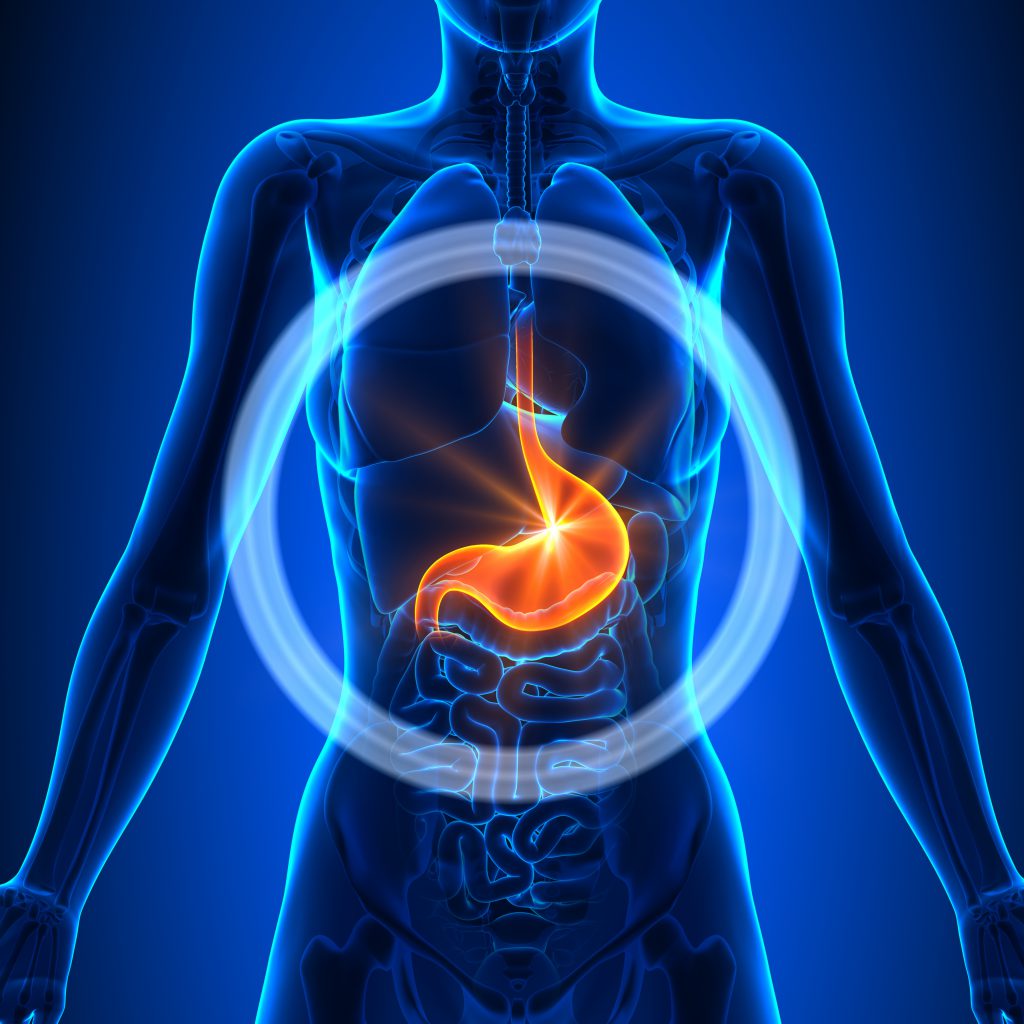
There is a new blog post because of the german day of the stomach last week. This time, it’s about gastric cancer and a first partial success in the personalized treatment.
The stomach
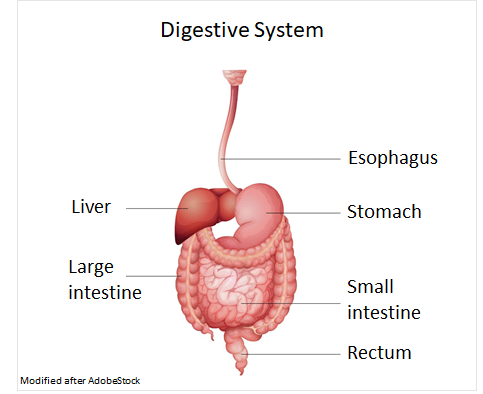
The stomach is a flexible, elastic muscular sac connecting to the esophagus and the duodenum, the first section of the small intestine.
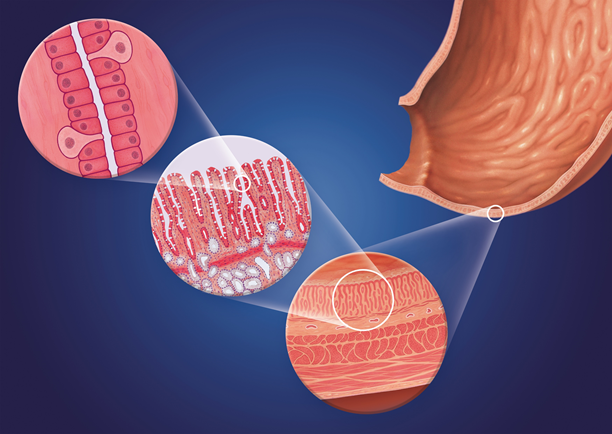
It consists of the gastric cardia, the fundus and the body of the stomach and the pylorus. The main purpose is the buffering of the ingested food. In addition, the stomach takes part in digestion: the food is mixed with the gastric juice and the chyme is passed on the small intestine, where the main part of the digestion takes place. From here, the nutrients can enter the body via the intestinal wall.
The thickness of the stomach wall is only a few millimeters and it consists of serveral layers; inside there is a thin mucous membrane consisting of about 35 million glands producing 2 ½ liters of gastric Juice per day.1
Stomach carcinoma – Formation
Stomach carcinoma arise from the cells of these glands and are thus a malignant growth of the gastric mucosa. This is the most common form of gastric cancer.1 The exact mechanisms by which such carcinomas arise, aren’t fully understood. However, previous diseases, nutrition and lifestyle (alcohol and tobacco) play a key role. 2
Gastric bacterium

A pre-existing disease is for example a constant inflammation of the gastric mucosa. Such a inflammation is triggered by the gastric bacterium Helicobacter pylori.2
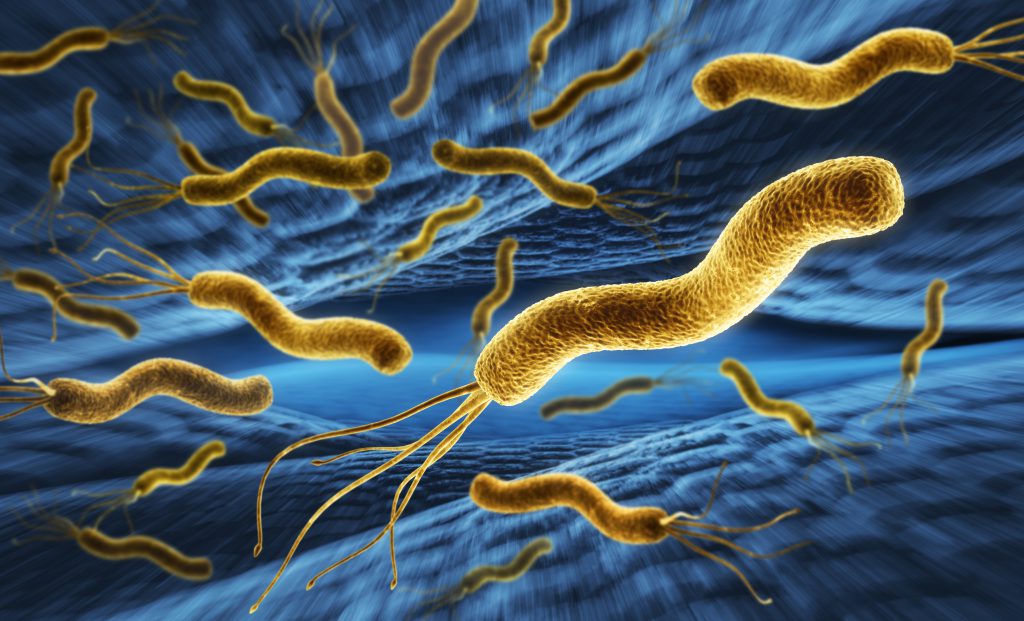
This microorganism nests in the gastric mucosa and therby damages it. Experts see these infections as one of the most important risk factors for the formation of gastric carcinoma: infected people carry a two to three time higher risk of diagnosed with cancer. 2
Genetic factors
Inheritance plays a minor role in developing the disease. About ten out of a hundred cases are caused by a familial risk.2 Such genetic factors may be for example the Hereditary Diffuse Gastric Cancer (HDGC) or the Hereditary nonpolyposis colorectal cancer (HNPCC). Both forms of colon cancer are inherited autosomal dominant and represent an increased risk of developing gastric cancer.3 The former is caused by a mutation in the gene CDH1, which encodes the protein E-Cadherin.3 Cadherins are transmembrane proteins playing a role in the stabilization of cell-cell contacts. When such a gene is inactivated, the cells lose their cohesion and gain the ability to migrate.3 HNPCC is based on a mutation in one of the DNA repair genes of whom six are known yet playing a role in the disease.4
Epidemiology
However, the genetic material can also change randomly in the course of life, usually in higher age, which can lead to the development of cancer.2

Thus, in 45% of all cases, the average age of a woman diagnosed with gastric cancer is 75 years, of a man 72 years.5
Gastric cancer is a relatively rare disease and affects 19-25 per 100,000 inhabitants in Germany.3
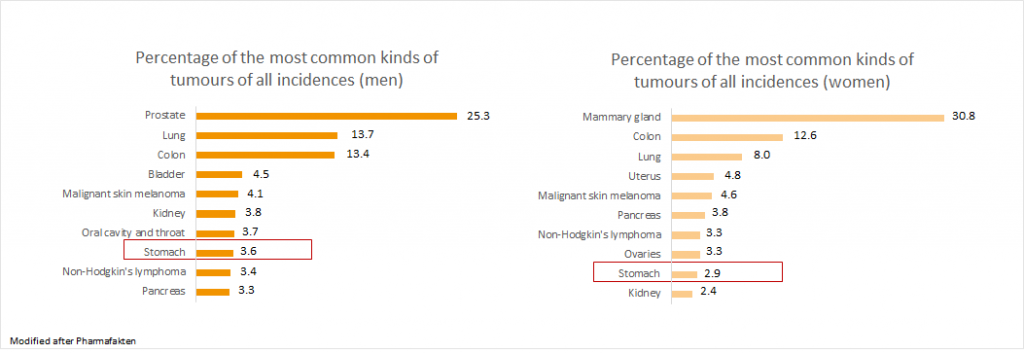
Worldwide approximately one million new cases of stomach cancer are added per year,6 in Germany around 16,000 (compared to 65,000 for colorectal cancer per year).7 There has been a decline both in the number of new cases and the mortality rate in the last years.8

The current five-year survival rate is 33% for women and 30% for men.8 This is relatively poor compared to other types of cancer,8 making stomach cancer the second most common cause of cancer death after lung cancer.6
Treatment of stomach cancer
Probably the most important treatment option is surgery to remove parts or the entire stomach.9 Chemotherapy is (additionally) used in an advanced tumor to destroy cells detaching from the tumor.9 In a classic Chemotherapy platinum and fluorouracil are used, prolonging median survival by 9-11 months.6 However, it rarely heals the disease.
Targeted therapy
Targeted drugs direct towards a point of attack inside the tumor and block processes allowing cancer cells to grow and divide quickly.
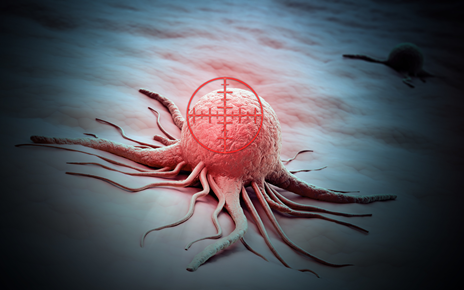
The goal is that such points are particularly frequent or distinct in the cancer tissue.
The cytostatic drug Trastuzumab is very effective in the treatment of HER-2 positive breast cancer.6 HER-2 stands for human epidermal growth factor 2 and is located on the cell surface. Via these receptors, signals are transmitted from the surface to the interior of the cell. Normal, healthy cells possess only few of such proteins. Through amplification, the coding DNA sections are increased, which is associated with an overexpression of the receptors. If there are too many HER-2 receptors on the surface, the cells divide more frequently and the tumor grows faster und more uncontrollably. Thus, overexpression of this receptor is a point of attack for a targeted drug. Trastuzumab was also admitting in 2010 for metastasizing gastric cancer in combination with chemotherapy (Cisplatin and Capectiabine or 5-Fluorouracil) when a pre-therapy mandatory test shows the overexpression.10 The proportion is 20% – similiar to that of HER-2 positive breast cancer patients.6
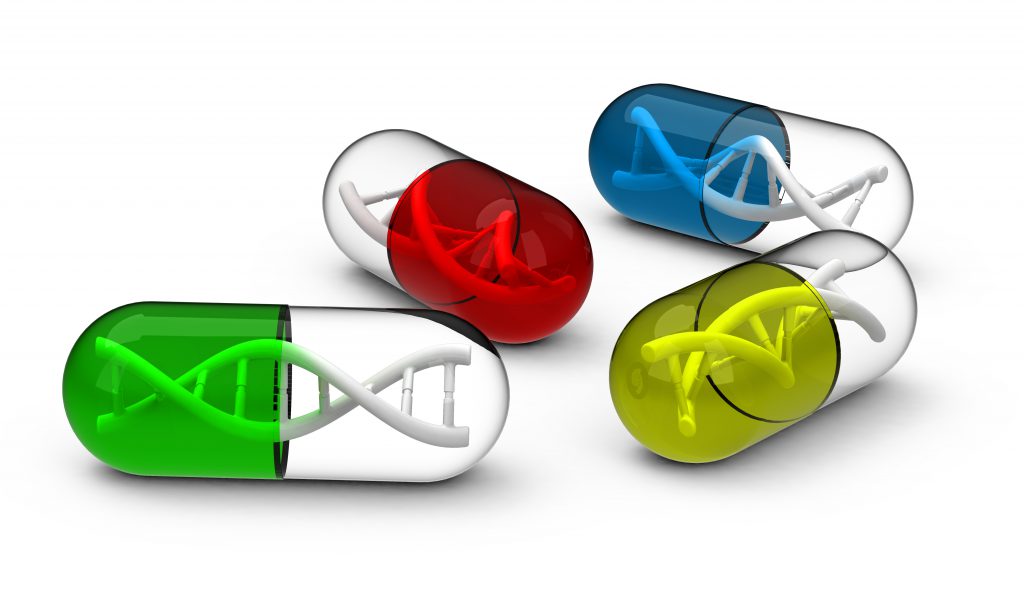
A study also demonstrated the beneficial effect of Trastuzumab in gastric cancer:11 Patients survived longer and the mortality risk was reduced by 26%. In 3,807 patients with locally advanced metastasizing gastric carcinoma, 22% showed overexpression of HER-2. Of these, 594 patients were either undergoing standard chemotherapy or get additinally Trastuzumab. The latter showed significantly prolonged progression free survival.
Contact Person:
Kristina Schraml (kristina.schraml@biovariance.com)



